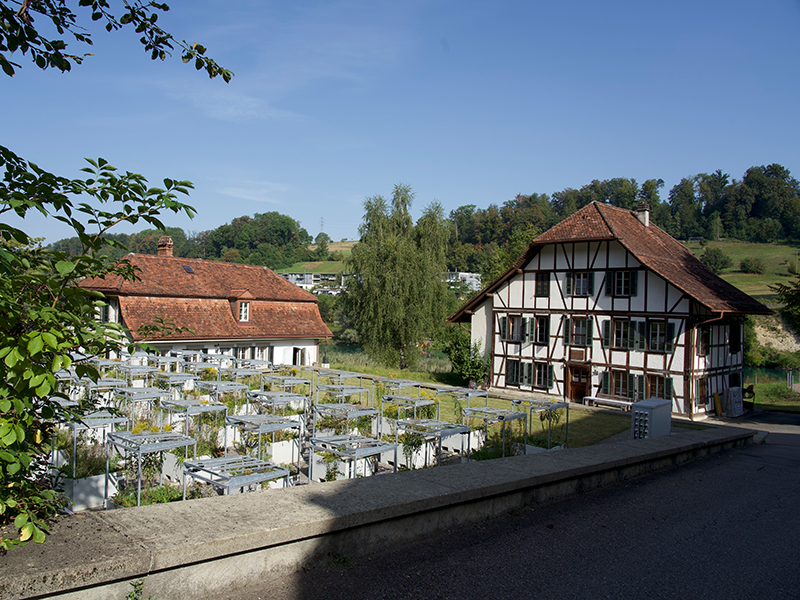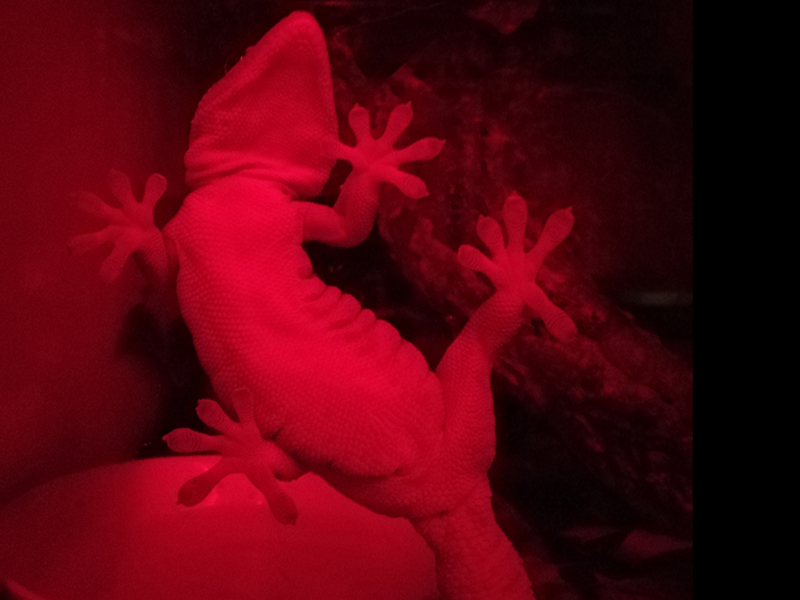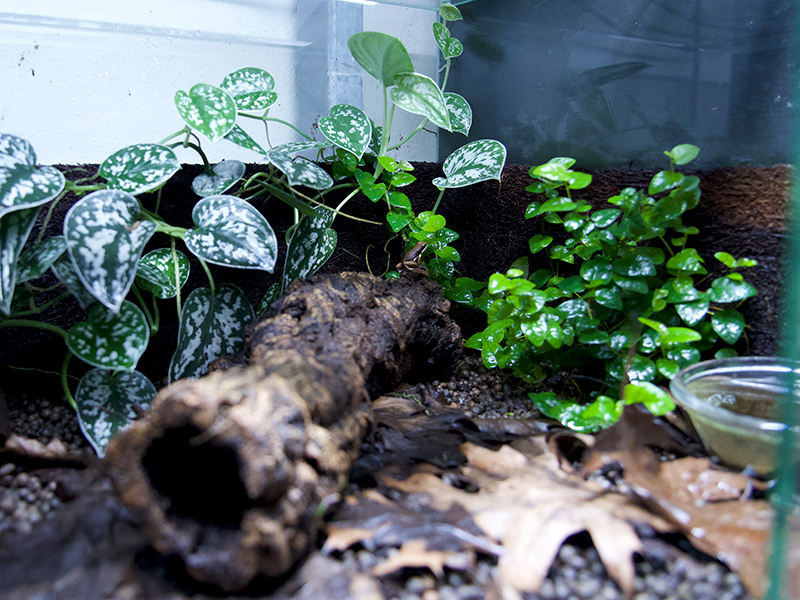Places at the University of Bern
Behavioural research at the farm
The Hasligut is located in the middle of Bremgarten Forest, directly by the Aare and surrounded by greenery. From a distance, the 17th century buildings look like a farm – but behind the historic walls lies a modern animal research station.

Eva Ringler, who works at the Hasli Ethological Station, was thrilled when she first saw the Hasligut – or "Hasli", as she affectionately calls it: "The historic houses, the direct access to nature and the tranquility make the place something special."
Behavioural research from fish to mammals
The Hasli now comprises four buildings: the historic farmhouse, the Stöckli, the barn and the night house. While the former houses lecture theatres and offices, the barn and night house are home to 44 geckos, 300 poison dart frogs and glass frogs and several hundred fish – all of which come from rescue centres or are bred in-house. Eva Ringler and her ethology team study their behaviour here.

"Little is known about the behaviour of many of these animals. For a long time, it was even denied that fish, frogs or reptiles can show strategic behaviour or emotions at all", says Ringler. It is still unclear, for example, why there are differences in the mating and brood care systems of different animal species and which communication mechanisms are associated with them.
Overlooked diversity

Through their findings, Ringler and her team hope to gain a more holistic view of the evolution of social behaviour. Amphibians and reptiles play a crucial role, as they are important but often overlooked pieces of the puzzle in understanding the evolution of social behaviour in all vertebrates. One example are glass frogs, where the males take care of the brood and protect their eggs from dehydration and predators. These and other unique behaviours and lifestyles of animals from all over the world are revealed by the researchers with their work from the Bremgarten Forest.
About the person

Eva Ringler studied at the University of Vienna and has been Head of the Behavioural Ecology Research Department at the Institute of Ecology and Evolution at the University of Bern since 2020. Ringler first encountered the Hasli Ethological Station as a student when she travelled to Switzerland for a seminar.
Subscribe to the uniAKTUELL newsletter

Stories about research at the University of Bern and the people behind it – gripping, multimedia and free of charge.